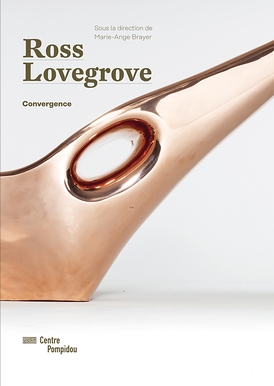Exhibition
Mutations-Créations / Ross Lovegrove
12 Apr - �3 Jul 2017
12 Apr - �3 Jul 2017

The event is over


Designer industriel, Ross Lovegrove s’inspire de la nature et de son processus évolutionnaire. Recourant depuis ses débuts aux avancées des technologies numériques, il approche le design de façon environnementale. L’exposition que le Centre Pompidou consacre à son travail montre cette convergence de la création, de la technologie et de la nature. Une conscience « durable » du monde.
Interview with the artist
Marie-Ange Brayer - Why did you become a designer? What does it mean to be a designer today?
Ross Lovegrove - I became a designer because design unites art, science and technology, and to give expression to my wonder at nature. Design is in perpetual reinvention. Because it is a matter of turning natural resources into useful objects, the designer stands at the heart of the ecological problematic that impacts us emotionally and aesthetically as well as demanding a collective response.
MAB – You use cutting edge technologies to produce a range of very different things that some have discussed in terms of “organic design”. What’s that about?
RL - I call “organic essentialism” a physical conformation that is as natural as possible. Biomorphic-looking forms that emerge from the inherent forces of the material. We are being propelled into a new “biological” age: robotics, prostheses, autonomous cars, architecture, all are being designed in accordance with principles derived from the organisation of nature. Biomimetics and the minimization of energy consumption seem to me essential, as in the Supernatural chair (2005). For the Ginkgo Table (2007) in carbon fibre I adopted the leaf of that tree as the dynamic informing principle. Diatom (2014) is an aluminium stacking chair that draws on automobile technology while finding inspiration in diatoms, primitive unicellular organisms. The mass is transformed into light, supple, perforated membranes in accordance with the principles of organic growth. The perforated sculptural forms of Henry Moore, the paintings of Francis Bacon, and the assemblages of Tony Cragg have also been a source of inspiration to me.
MAB - You set biology, anthropology, physics and ecology at the heart of your work and champion a humanist vision of design. What does “convergence” signify in this holistic approach to design?
RL - For me, “convergence” refers to the moment when the fusion of all the different elements is reflected in a profound transformation in the way that we design and produce. In the revolution that is already on its way, additive manufacture will enable us to print mater with cellular precision. Advances in materials science, in clean energy, in biomimetics, combined with advances in physics, will offer a better understanding of the constitutive elements of life itself, in which intelligent adaptation will be informed by the human imagination. The notion of “convergence” draws the arts and sciences together: this global approach to design will play a key role in the “Second Renaissance” of the 21st century, undergirding new principles of design that will touch us all, wherever we may be in the world.
PERSON - Marie-Ange Brayer
Source :
in Code Couleur, n°27, january-april 2017, pp. 26-27
Where
Galerie 3
When
12 Apr - �3 Jul 2017
11am - 9pm, every days except tuesdaysPartners







